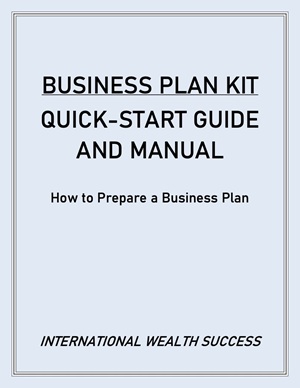Day 5: Creating an Action Plan to Achieve Your Goals
Setting a goal is a great start, but reaching it is another matter. To make sure you get to your desired outcome, it’s important to make a Plan of Action. This plan should be detailed and guide you toward your goal.
There is success, fame, and glory at the top, for the reason that few arrive to possess the abundance. There is room for you there. There is wealth for you there. There is glory for you there. If, therefore, you desire to attain the heights, deny the lower things the right to hold your attention. With inherent power of will and desire, rise above their vibration. Charles Haanel
This isn’t a poetic musing; it’s a directive for action!
50 years ago our team in the Financial Services Industry would spend 4 days in a secluded Mountain Cabin reviewing the previous year’s results and then create our Individual Plans of Action to achieve the coming year’s individual goals. Amazingly, those who followed the plan enjoyed personal success in the coming year through the attainment of their self-directed GOAL.
Now, let’s explore ten steps to create a solid action plan to achieve your Goals. There are examples included along with the steps to help you follow along with your own goals.
Step 1: Identify Your Goal
Establishing a plan for success starts with understanding your goals. First, get clear about what you want and why it matters.
An Example Goal: To run a marathon within the next year
Step 2: Break Your Goal into Smaller Parts
Break your goal into smaller, more manageable parts. This step will make your goal less intimidating and more achievable.
Remember the ancient adage: “Mile by mile, it’s a trial; yard by yard, it’s hard; but inch by inch, it’s a cinch.”— Gabrielle Giffords
Example
- Start with shorter runs: Run 1-2 miles three times a week for the first month.
- Increase distance gradually: Increase weekly mileage by no more than 10% each week after the first month.
- Join a running group: Find a local running group or a running partner to help keep me motivated and accountable.
- Incorporate strength training: Add core, hip, and leg strengthening exercises twice a week to help prevent injury.
- Find a training plan: Research and select a beginner-friendly training plan appropriate for the next year.
- Participate in shorter races: Participate in at least one 5K or 10K race before the marathon.
Step 3: Identify the Obstacles
Identify the potential obstacles that may hinder you from achieving your goal. It’s important to anticipate your challenges to plan to overcome them.
Example list of obstacles:
- Lack of fitness and stamina
- Limited time for training due to work and family commitments
- Risk of injury due to overtraining
Step 4: Create a Plan of Action
Once you’ve identified the obstacles, create a Plan of Action. Outline the steps you must take to achieve each milestone and overcome the obstacles.
Example plan of action to overcome obstacles:
- Develop a training schedule that includes running 3-4 times a week.
- Gradually increase the distance and intensity of the training over time
- Incorporate strength training and cross-training activities to avoid injury and increase stamina.
- Seek the advice of a coach or experienced runner to provide guidance and support.
- Use a running app to track progress and monitor performance.
Step 5: Set a Deadline
A realistic deadline will keep you focused and motivated to work towards your objectives.
Example of setting realistic deadlines for achieving each milestone:
- Start with shorter runs: Run 1-2 miles three times a week for the first month.
Example Deadline: By the end of the first month, increase the distance of one run to 3 miles.
- Increase distance gradually: Increase weekly mileage by no more than 10% each week after the first month.
Example deadline: By the end of the third month, be able to run 10 miles without stopping.
- Join a running group: Find a local running group or a running partner to help keep you motivated and accountable.
Example deadline: Research and join a local running group within the first two weeks or find a running partner.
- Incorporate strength training: Add core, hip, and leg strengthening exercises to my routine twice a week.
Example deadline: By the end of the first month, develop and commit to a twice-weekly strength training routine.
- Find a training plan: Research and select a beginner-friendly training plan appropriate for the next year.
Example deadline: By the end of the second month, research and select a suitable training plan that will last for the next year.
- Participate in shorter races: Participate in at least one 5K or 10K race before the marathon.
Example deadline: By the end of the ninth month, register for a 5K or 10K race to participate in before the marathon.
- Keep track of progress: Use a running app or journal to record all runs, distances, and times to track progress and adjust the training plan as needed.
Example deadline: By the end of each week, update the running app or journal with the progress made throughout the week.
Setting deadlines for these smaller milestones keeps you on track and ensures you progress toward running a marathon within the next year.
Step 6: Determine the Resources You Need
Determine the resources you need to achieve your goal. This step includes identifying the people, tools, and equipment necessary for each milestone.
Example of determining the resources needed to achieve each milestone:
- Running shoes and appropriate clothing
- A running app or GPS watch to track progress and performance.
- A gym membership or access to outdoor running trails
- A coach or experienced runner to provide guidance and support.
Step 7: Monitor Your Progress
Monitor your progress regularly to ensure you’re on track. Use a journal, planner, or mobile app to track your progress.
Example of how to monitor progress:
- Use a Running App — Use a running app to track the distance, pace, and duration of each run.
- Keep a Training Journal — Keep a training journal to track your workouts, including the distance, time, and how you felt during the run.
- Monitor Heart Rate – Get a heart rate monitor and use it to track your heart rate during workouts.
- Track Body Composition — Track your body composition regularly using a body fat scale or other measurement tool.
- Get Feedback from Others — Ask a coach or experienced runner to provide feedback on your progress or join a running club for support and motivation.
Step 8: Adjust Your Plan When Necessary
It’s important to remain flexible and adapt your plan as you progress.
Here are some examples:
- Adjust Training Schedule — If you’re not progressing as quickly as you’d like, you may need to adjust your training schedule. This could include adding an extra day of running or reducing the distance of your runs to prevent injury or burnout.
- Adjust Milestones — If you’re struggling to reach a particular milestone, you may need to adjust the milestone to make it more achievable. For example, if you’re finding it challenging to run a 10k within four months, you could adapt the milestone to running a 5k without stopping within the same timeframe.
- Adjust Diet — If you’re not seeing the weight loss results you want, you may need to adjust your diet. This could include reducing your calorie intake or altering your macronutrient ratios to support your training goals.
- Adjust Cross-Training Activities — If you’re experiencing pain or discomfort during your runs, you may need to adjust your cross-training activities. This could include incorporating more yoga or Pilates into your routine to improve flexibility and reduce the risk of injury.
- Adjust Rest and Recovery — If you’re worn out and need a break, it might be a good idea to switch up your plan a bit. Maybe take a few days off from training or be kinder to yourself when you exercise so your body gets the rest it needs.
Remember, adjustments to your plan should be made based on your personal goals, abilities, and limitations. It’s essential to remain flexible and open to changing your plan to achieve your goal. When you take time to adjust your plan as necessary, it’ll keep you on track to ensure you continue to make progress.
Step 9: Celebrate Your Successes
Celebrate your successes by recognizing your achievements and rewarding yourself for each milestone you reach.
Here are some examples:
- Treat Yourself to a Massage — After a particularly challenging workout or milestone, treat yourself to a tension-reducing, stress-relieving, and relaxing massage.
- Enjoy a Healthy Meal — Celebrate your progress by enjoying a healthy meal that aligns with your fitness goals. Choose a meal high in protein, fiber, and healthy fats to support muscle recovery and boost energy levels.
- Take a Fitness Class — Treat yourself to a fitness class or workout you’ve wanted to do. Staying engaged in your fitness routine while celebrating your progress will feel great.
- Buy New Workout Gear — Investing in new workout gear boosts your confidence and motivation. Choose functional and comfortable gear, such as a new pair of running shoes or compression leggings.
- Plan a Fun Fitness Activity — Plan a fun fitness activity with friends or family, such as hiking, biking, or rock climbing, helping you celebrate your progress while enjoying time with loved ones.
Step 10: Review and Evaluate Your Plan
Review and evaluate your plan regularly. Identify areas of improvement and adjust your plan as necessary.
Here are some examples:
- Review Progress — Review your progress towards your goal by looking at your training journal, running app data, and other measurements. Take note of areas where you’ve made progress and where you may need to adjust.
- Evaluate Obstacles — Evaluate any obstacles you encountered during the process and think about how you’ll overcome them in the future. This could include adjusting your training schedule, seeking additional support, or reevaluating your goals and motivations.
- Identify Strengths and Weaknesses — Identify your strengths and weaknesses when working towards your goal, helping you focus on areas where you need more work or are already doing well.
- Reassess Your Goals — Reassess your overall goal and consider whether it’s still relevant and meaningful to you. If not, consider adjusting your goal or setting a new one that better aligns with your values and aspirations.
- Adjust Your Plan — Based on your evaluation, adjust your plan to continue progressing towards your goal. This could include adjusting your training schedule, seeking additional support, or setting new milestones to keep yourself motivated and engaged.
Creating a solid Plan of Action to achieve your goals is essential for success. Follow these ten steps to create a specific and clear plan to accomplish each objective you plan to achieve in your life. Remember to be flexible, monitor your progress, and celebrate your successes.
Day 5 Finding Clarity Exercise: Create a Clear Action Plan
Start by looking over the list of ideas and goals you’ve generated so far in this challenge. Then choose ONE personal or professional goal you’d like to achieve within the next six months to a year.
- Follow the steps — Use the ten steps outlined above to create a personalized action plan for achieving your goal. Make your plan specific, measurable, achievable, relevant, time-bound, and broken down into smaller, more manageable tasks.
- Submit your plan — Submit your personalized action plan to your accountability partner or mentor for review and feedback. Include specific milestones and metrics that you’ll use to track your progress and any potential obstacles or challenges you may encounter along the way.
- Evaluate your progress — For the next few weeks or months, evaluate your progress toward your goal and make any necessary adjustments to your plan.
Use the steps outlined above to monitor your progress,
celebrate your successes, and adjust as necessary.
You got this!
Are you getting the idea?
Join the forum, ask questions, share your experiences, and engage
Join the Forum
Here is a Quick Video Focusing on Building on Your Passion
Share Your Thoughts and Experiences Below












5. CREATING AN ACTION PLAN TO ACHIEVE YOUR GOALS:
STEP 1: Identify Your Goals: I want to successfully lease out my 3 Bedroom Condo in Del Mar, CA by April 1, 2025 for $5,000 a month with a one year lease.
STEP 2: Break Your Goal into Smaller Steps:
A. Start With a Shorter Goal: My first Goal is to either fix or replace my Air Conditioner.
B. My 2nd Goal is to fix or replace the Gas Fireplace. Then I need to find a contractor to do the work.
C. My 3rd Goal is to find out about the wood casing around the garage door opening. Does it need treatment from a Termite Company or does it need to be replaced? After making this decision I need to find the contractor who will work on it.
D. I need to replant the back patio and the entrance if needed. I will put in colorful plants that project a happy space. Purchase a bench for the back patio.
E. Decide if the house needs repainting. If so, call Richard Farwell.
F. Is new carpet needed on the stairs or upstairs? If needed visit 3 carpet companies and find carpet. Then make a date for carpet installation.
G. Find colorful accessories for the bathrooms and kitchen counters.
H. When the work is completed hire Rosario Ramerez to come clean the house.
I. Have Carla list the property and begin showing it.
STEP 3. IDENTIFY OBSTACLES
1. Expense of Air Conditioner.
2. Worst time of year to get someone to work on the fireplace.
3. If the unit needs new paint how much will that cost now?
4. If the stairs and upstairs need carpet how much will that cost?
5. Everything will have to be done at full speed to get the unit ready by April 1st. I would prefer it be finished by the end of February but, that may just be pie in the sky.
STEP 4. CREATE A PLAN OF ACTION:
1. During the 2 weeks I will have between the 1st walk through and having the unit vacant I will have to call at least 5 different air conditioning companies. This is the largest expense I will have so, it is a most crucial step.
2. I will call the fireplace companies I can find during the two weeks after the walk through. I can also ask for recommendations from Carla and Rocky.
3. The current tenant did some painting last year but, I’ll need to determine if it needs repainting.
4. The last time I was in the place the carpet looked wonderful. But, I’ll have to make that determination again on the walk through. If I can keep it I’ll have it professionally cleaned.
5. I’m a fast worker. I will be able to accomplish these tasks within the time limit. If it costs more or takes longer I will just have to adjust my expectations.
STEP 5. SET A DEADLINE:
April 1st is my deadline to have the unit ready for its next family.
1. Jan. 15th initial inspection.
2. Jan. 16th Start calling Air Conditioning, Fireplace Companies, Termite Companies, if needs be Carpet and Paint specialists.
3. Have my appointments come by the condo February 3rd all day.
4. Continue meeting contractors.
5. Decide on which contractor to go with for each issue.
6. Contact contractors and set up dates for their schedules. February 5th is my goal to begin work.
7. Just before showing the condo put out cute personal items on all counters and towels on towel racks.
8. Just before showing replant all gardens that need color.
9. Keep track of progress in a log.
STEP 6 DETERMINE RESOURCES YOU NEED
1. Jan. 15th Inspect house.
2. Feb. 1st. Take a beach chair up there and go up for another inspection after the move out.
3. Feb 1st Calculate how many and what kind of plants I will buy.
4. Jan 16th begin calling Contractors and set dates to meet them up there Feb. 3rd and 4th.
5. Jan. 17th start looking for carpet and paint colors if they are needed.
6. Feb. 3rd Meet with as many contractors as I can.
7. Feb. 4th. Continue interviewing contractors.
8. Feb. 5 th Decide which companies I will go with. Call them and make dates for work to begin.
9. Feb. 6th Contractors begin working.
10. Schedule the carpet people to come in last after the paint is completed.
11. Feb. 28th Put place in the market if everything is fixed. If not, wait until it is ready to show.
STEP 7 MONITOR PROGRESS
– Keep a running diary of progress and problems.
– Make a Lesson Plan of steps that need to be taken.
– Keep phone numbers of all workers.
– Keep a bank record of every penny spent.
– Get feedback from Carla of how the renovation is coming. Ask her for any suggestions she may have.
STEP 8 ADJUST YOUR PLAN WHEN NECESSARY
-Adjust dates and times when needed.
– Adjust how much money I need to spend. . . Especially on the dreaded air conditioner.
– expenses will go on credit card so, keep an eye on it daily and record each receipt.
– It is possible that we complete all work in one month. I have done that before when painting and changing carpet. That would just be a dream come true but, it could happen.
– if I get very tired I’ll just have to keep pumping myself up to realize this is probably the last time I have to go through this and the next time will be my son, Sean, who has to do all of the work.
-If the work takes longer than expected I just have to be patient and realize that this is a wonderful addition to my retirement and it’s worth all my efforts.
STEP 9 CELEBRATE YOUR SUCCESS
– After the completion of each major task I’ll celebrate by going out to dinner with my girlfriends.
– I am most afraid of the Air Conditioning. When it is finished I’ll go out with Betty to Tony’s Jacal.
-When the entire project is completed and new tenants are in the condo I will celebrate with perhaps a small trip.
Why do I BELIEVE all of this will happen>
Possible modifications, but APPLYING Action assures successful completion!
Awesome PLAN of Action.